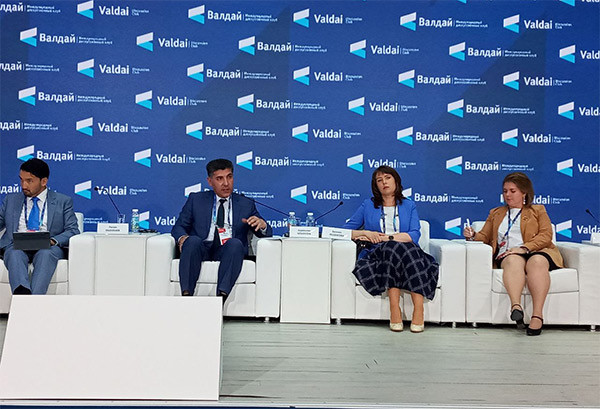
First Deputy Head of ISMI assesses the achievements of regional cooperation in Central Asia at the conference of the Valdai Club
Tashkent, Uzbekistan (UzDaily.com) -- On 20 May, the Central Asian conference of the Valdai International Discussion Club started in Kazan on the theme: "Russia and Central Asia in the face of the challenges of the new world - a joint path to the future."
More than 60 well-known experts from 16 countries, including Russia, Afghanistan, Great Britain, Germany, Iran, Kazakhstan, Kyrgyzstan, China, Tajikistan, France and Estonia, are taking part in the conference. The Uzbek side is represented by experts from the Institute for Strategic and Interregional Studies under the President of the Republic of Uzbekistan (ISMI) and the International Institute of Central Asia.
Speaking at the session "New" windows of opportunity "of the world economy for Russia and Central Asia, the first deputy head of the ISMI Akramjan Nematov outlined the main trends in the development of regional cooperation between the states of Central Asia. Among them, he highlighted the formation of a new political atmosphere, thanks to which cooperation is intensifying in all spheres. The most important achievement of this process, according to Akramjan Nematov, was the increased dynamics of contacts between the heads of state of the region. “Only the President of Uzbekistan Shavkat Mirziyoyev has held about 70 meetings with his Central Asian colleagues over the past five years,” the expert noted.
According to him, the tension in relations is giving way to a new political atmosphere, an attitude to seek mutual compromises and agree on approaches to solving territorial, energy and water problems.
Even the recent incident on the Tajik-Kyrgyz border was resolved as soon as possible thanks to the established mechanisms of regional dialogue. As a result of the collective efforts of the heads of state, the conflict was timely transferred to the plane of political and diplomatic settlement.
Nematov emphasized that the commitment to the ideas of regional cooperation did not break even during the difficult period of the coronavirus pandemic, which paralyzed almost the entire world. According to the ISMI - “At the level of heads of state, close coordination of efforts to counter the pandemic has been established. So, in the difficult year of 2020, the leader of Uzbekistan held 35 telephone conversations with the heads of states of Central Asia, issues of logistics, transport, and the return of citizens to their countries were promptly resolved. Deliveries of humanitarian supplies and other mutual support were organized. "
It is important that this process of interstate rapprochement is open and creates new opportunities for mutually beneficial cooperation in various fields. This is evidenced by the dynamics of the development of economic relations and the inflow of investments in the region.
According to Akramjon Nematov, the aggregate GDP of the Central Asian countries compared to 2016 showed an increase of 19.2% and amounted to US$295 billion in 2020. "Mutual trips of citizens of Central Asian countries have quadrupled, the number of joint ventures has grown fivefold, the foreign trade of the region’s countries has grown by 56%," the expert cited such data.
The stability of established trade and economic ties is confirmed by the test of a pandemic, in the conditions of which there was no significant drop in trade between the countries of the region. For example, in 2020, Uzbekistan’s trade with the countries of the region remained at over US$5 billion, decreasing by only 5.7%. At the same time, the exchange of goods with Tajikistan and Kyrgyzstan has even grown.
As a result, according to A. Nematov, there is a growing interest of foreign investors in the region. Thus, in 2016-2019, the inflow of foreign direct investment into the region increased by 40%, amounting to US$37.6 billion.
As a result, the share of investments in Central Asia in the total volume in the world increased from 1.6% to 2.5%, which is an impressive twofold growth.
Thus, regionalization trends bring tremendous opportunities and benefits for everyone. The strengthening of transport, economic and energy interconnection, the formation of a common and capacious market, favorable conditions for the smooth movement of goods, services and labor resources are becoming characteristic, new windows of opportunity are opening not only for the countries of the region, but also for their closest partners, including Russia.